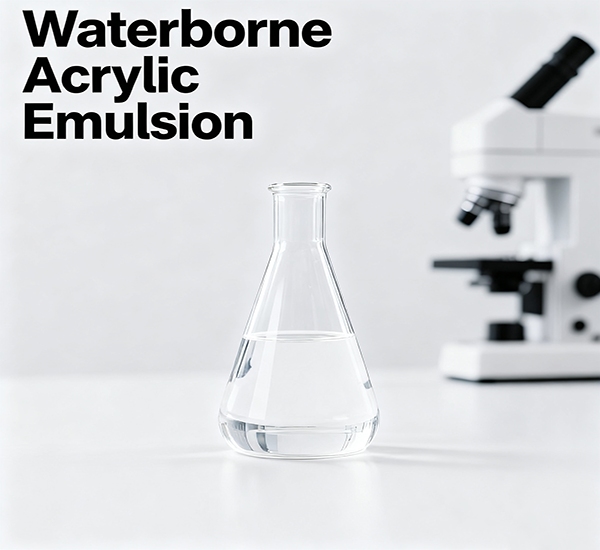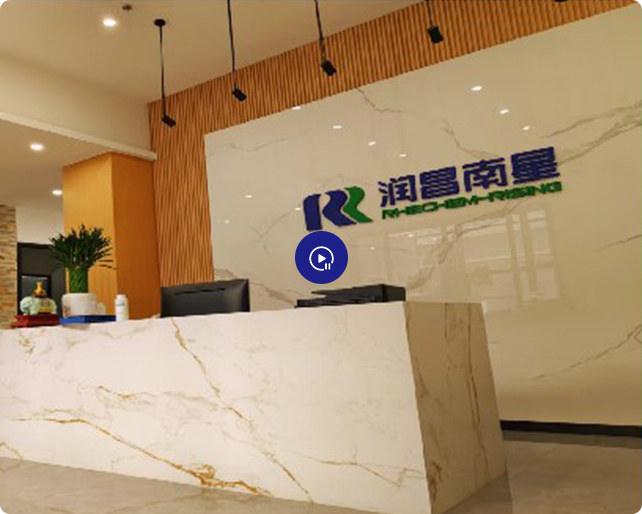Advanced Composition and Properties of Waterborne Acrylic Emulsions
Sep 19, 2025
Waterborne Acrylic Emulsion: Advanced Composition, Functional Performance, and Future Innovations
Waterborne acrylic emulsions represent a critical class of colloidal systems in which discrete acrylic polymer particles are stabilized in an aqueous continuous phase. These systems have gained prominence as sustainable alternatives to solvent-borne coatings due to their low volatile organic compound (VOC) content and compliance with increasingly stringent global environmental regulations. The continued evolution of waterborne acrylic emulsion technology reflects a convergence of polymer science, industrial requirements, and ecological responsibility.
Chemical Composition and Classification
The performance of a waterborne acrylic emulsion is fundamentally governed by the selection and ratio of monomers, the emulsification system, and the polymerization process. Based on their chemical architecture, these emulsions can be categorized into several functional types:
Pure Acrylic Emulsions
Comprising monomers such as methyl methacrylate (MMA), butyl acrylate (BA), and acrylic acid (AA), pure acrylic emulsions exhibit superior UV stability, oxidative resistance, and color retention. The absence of hydrolytically sensitive esters contributes to their durability in exterior applications. Such emulsions are particularly suitable for long-term weatherable coatings where chalk resistance and gloss retention are required.
Styrene-Acrylic Emulsions
Introducing styrene into the copolymer composition enhances mechanical rigidity and reduces raw material costs. However, phenyl groups in styrene impart susceptibility to UV degradation, limiting use in indoor applications such as interior wall paints and paper coatings. Advancements in stabilization technologies have partially mitigated these issues, allowing expanded use under moderate exposure conditions.
Functionalized and Crosslinkable Acrylic Emulsions
Incorporation of functional monomers—hydroxyethyl acrylate (HEA), glycidyl methacrylate (GMA), or acetoacetoxyethyl methacrylate (AAEM)—enables post-crosslinking during film formation. These crosslinked networks improve solvent resistance, hardness, and tensile strength. Self-crosslinking systems using diacetone acrylamide (DAAM) with adipic dihydrazide (ADH) are also widely employed in high-performance industrial coatings.
Key Performance attributes and Application-Specific Design
The formulation of waterborne acrylic emulsion must be tailored to application-specific requirements through careful control of particle size, glass transition temperature (Tg), minimum film-forming temperature (MFFT), and colloidal stability.
Architectural Coatings
In decorative paints, the balance between hardness and flexibility—modulated via Tg adjustment—is critical for crack resistance and dirt pickup resistance. High pigment binding capacity, alkaline resistance, and rheological control ensure uniform coverage and long-term service life on mineral substrates.
Industrial and Protective Coatings
For metal substrates, acrylic emulsions are often modified with phosphorous-based monomers or corrosion-inhibiting pigments to enhance anti-corrosive performance. Compatibility with polyurethane dispersions (PUDs) or epoxy hybrids further expands their utility in automotive, machinery, and coil coatings.
Adhesives and Nonwovens
Low-Tg emulsions facilitate low-pressure film formation and high tack in pressure-sensitive adhesives (PSAs). Particle size distribution and surfactant type are optimized to achieve balance between peel strength and shear resistance. In textile and fiber bonding, soft and flexible films provide mechanical durability without compromising hand feel.
Future Innovations and Technological Trends
Ongoing research aims to transcend conventional performance boundaries and introduce multi-functional characteristics:
Nanocomposite and Hybrid EmulsionsIntegration of nano-silica, ZnO, or layered silicates enhances barrier properties, scratch resistance, and thermal stability. Encapsulation of nano-additives within polymer particles improves dispersion stability and prevents agglomeration. Hybrid systems such as acrylic-siliconized emulsions are being developed for extreme weather resistance.
Bio-based and Circular MaterialsEmulsions derived from bio-acrylic acid, itaconic acid, or lignin-based surfactants are gaining traction. Lifecycle assessment (LCA) and carbon footprint reduction are driving adoption in green building certifications such as LEED and BREEAM.
Stimuli-Responsive and Smart CoatingspH-responsive, thermochromic, or self-healing waterborne acrylic emulsions represent the next frontier. Microencapsulated healing agents or conductive polymers (e.g., PEDOT:PSS) are incorporated for specialized applications in smart packaging and electronic coatings.
Process and Regulatory AdvancementsAdvances in semi-batch and seeded emulsion polymerization allow better control over particle morphology and molecular weight distribution. Compliance with regulations such as REACH, EPA TSCA, and China GB 18582-2020 necessitates continuous reduction of residual monomers and APEO-free surfactants.
Conclusion
Waterborne acrylic emulsions continue to evolve as a backbone of sustainable coating and adhesive systems. Their versatility stems from tunable chemistry and compatibility with a wide array of additives and modifiers. Future developments will likely focus on high-performance hybrid systems, intelligent functionalities, and deeper integration of circular economy principles. As material science and process technology advance, waterborne acrylic emulsions are expected to further displace solvent-based systems while enabling new applications in emerging industries.




 Network Supported
Network Supported

